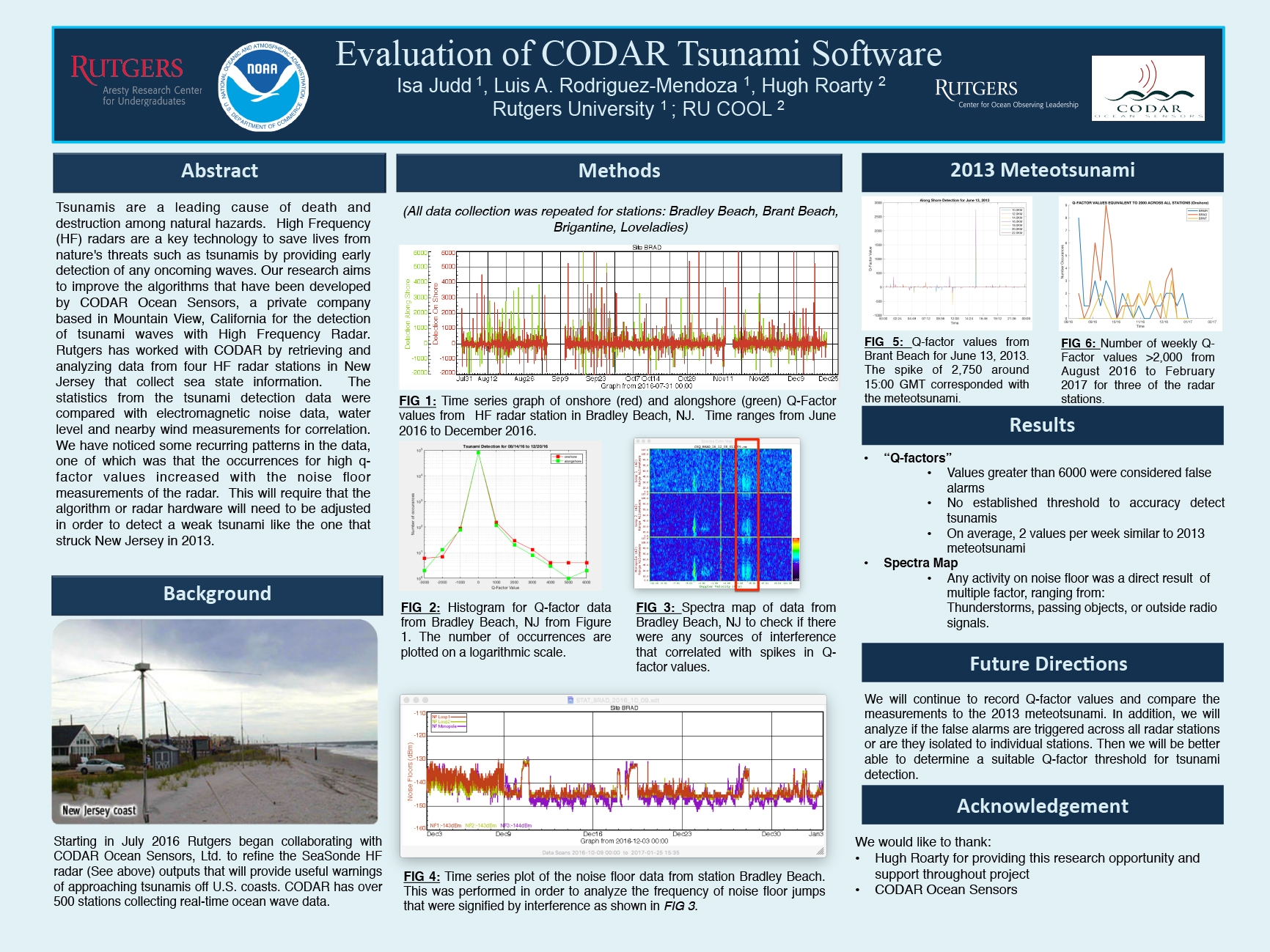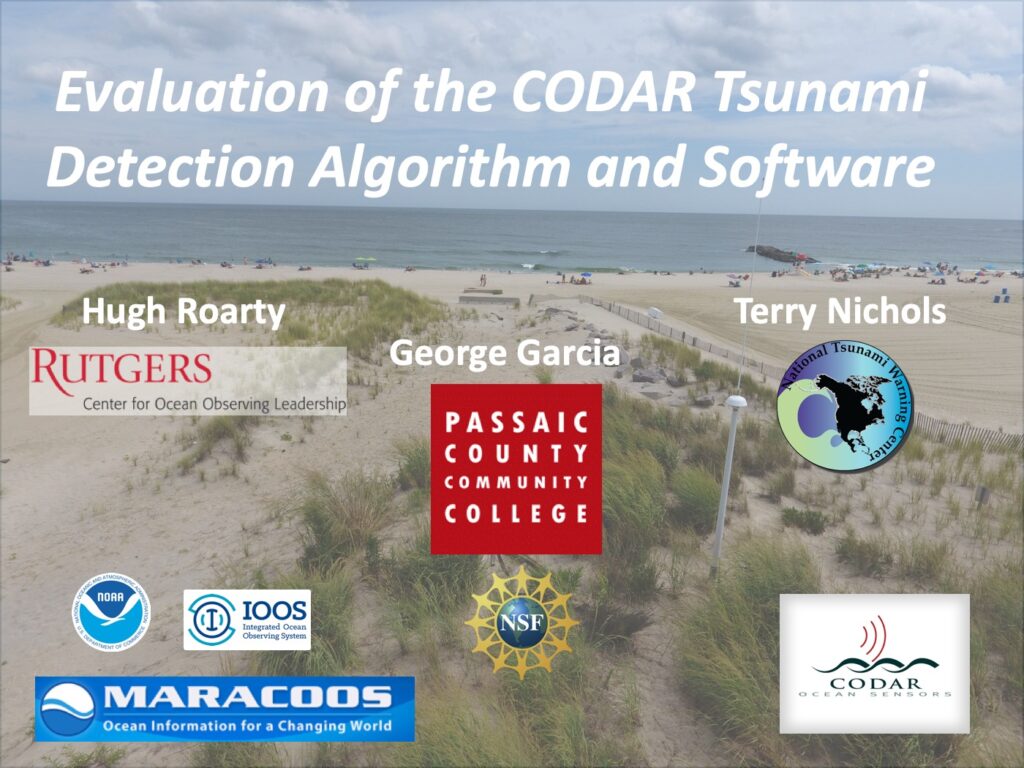Rutgers COOL is partnering with CODAR Ocean Sensors to refine SeaSonde HF radar outputs to provide useful warnings of approaching tsunamis off the coasts of the United States. Directed out of the Tsunami Warning Center (TWC) in Palmer, Alaska, and co-sponsored by U.S. NOAA/National Weather Service (NWS) Tsunami Program Office’s Tsunami Research Advisory Council (TRAC) and NOAA/NOS U.S. IOOS, the specific aim is to optimize detectionwhile reducing false alarms.
The program will geographically focus on measurement sites in New Jersey for the following reasons: (a) Recent meteo-tsunamis were observed there (e.g., 2013), and the shallow shelf has allowed long SeaSonde warning times (43 minutes). (b) Group can take advantage of a long-standing partnership between CODAR and Rutgers, who oversees the maintenance of MARACOOS’ SeaSondes (41 of them).
Four stations were chosen to operate in a “simulator mode”, first collecting a baseline data set to determine the frequency and cause of false alarms. Then simulated “test tsunami” signals obtained from CODAR’s tsunami model (based on the local bathymetry) will be injected into the data stream, to optimize detection probability. Near-real-time ASCII files of q-factor spikes from the four New Jersey radars will be sent to the TWC in Palmer, AK, as well as to Rutgers and CODAR. This will allow feedback from TWC to improve CODAR algorithm and NOAA decision thresholding. It will also permit site- specific performance assessment, based on local background, bathymetry, and tsunami intensity.
Dr. Roarty delivered a talk at the OCEANS19 Meeting in Seattle, WA on the evaluation of the tsunami detection algorithm and software.
A copy of the presentation is here.
A poster on the first year of research was presented at the Rutgers Aresty Undergraduate Research Symposium.

Download pdf version.

